Interventions for preventing the progression of autosomal dominant polycystic kidney disease
- PMID: 39356039
- PMCID: PMC11445802
- DOI: 10.1002/14651858.CD010294.pub3
Interventions for preventing the progression of autosomal dominant polycystic kidney disease
Abstract
Background: Autosomal dominant polycystic kidney disease (ADPKD) is the leading inherited cause of kidney disease. Clinical management has historically focused on symptom control and reducing associated complications. Improved understanding of the molecular and cellular mechanisms involved in kidney cyst growth and disease progression has resulted in new pharmaceutical agents targeting disease pathogenesis and preventing disease progression. However, the role of disease-modifying agents for all people with ADPKD is unclear. This is an update of a review first published in 2015.
Objectives: We aimed to evaluate the benefits and harms of interventions to prevent the progression of ADPKD and the safety based on patient-important endpoints, defined by the Standardised Outcomes in NephroloGy-Polycystic Kidney Disease (SONG-PKD) core outcome set, and general and specific adverse effects.
Search methods: We searched the Cochrane Kidney and Transplants Register of Studies up to 13 August 2024 through contact with the Information Specialist using search terms relevant to this review. Studies in the Register are identified through searches of CENTRAL, MEDLINE, and EMBASE, conference proceedings, the International Clinical Trials Registry Platform (ICTRP) Search Portal, and ClinicalTrials.gov.
Selection criteria: Randomised controlled trials (RCTs) comparing any interventions for preventing the progression of ADPKD with other interventions, placebo, or standard care were considered for inclusion.
Data collection and analysis: Two authors independently assessed study risks of bias and extracted data. Summary estimates of effects were obtained using a random-effects model, and results were expressed as risk ratios (RR) and their 95% confidence intervals (CI) for dichotomous outcomes and mean difference (MD) or standardised mean difference (SMD) and 95% CI for continuous outcomes. Confidence in the evidence was assessed using the Grading of Recommendations Assessment, Development and Evaluation (GRADE) approach.
Main results: We included 57 studies (8016 participants) that investigated 18 pharmacological interventions (vasopressin 2 receptor (V2R) antagonists, antihypertensive therapy, mammalian target of rapamycin (mTOR) inhibitors, somatostatin analogues, antiplatelet agents, eicosapentaenoic acids, statins, kinase inhibitors, diuretics, anti-diabetic agents, water intake, dietary intervention, and supplements) in this review. Compared to placebo, the V2R antagonist tolvaptan probably preserves eGFR (3 studies, 2758 participants: MD 1.26 mL/min/1.73 m2, 95% CI 0.73 to 1.78; I2 = 0%) and probably slows total kidney volume (TKV) growth in adults (1 study, 1307 participants: MD -2.70 mL/cm, 95% CI -3.24 to -2.16) (moderate certainty evidence). However, there was insufficient evidence to determine tolvaptan's impact on kidney failure and death. There may be no difference in serious adverse events; however, treatment probably increases nocturia, fatigue and liver enzymes, may increase dry mouth and thirst, and may decrease hypertension and urinary and upper respiratory tract infections. Data on the impact of other therapeutic interventions were largely inconclusive. Compared to placebo, somatostatin analogues probably decrease TKV (6 studies, 500 participants: SMD -0.33, 95% CI -0.51 to -0.16; I2 = 11%), probably have little or no effect on eGFR (4 studies, 180 participants: MD 4.11 mL/min/1.73 m3, 95% CI -3.19 to 11.41; I2 = 0%) (moderate certainty evidence), and may have little or no effect on kidney failure (2 studies, 405 participants: RR 0.64, 95% CI 0.16 to 2.49; I2 = 39%; low certainty evidence). Serious adverse events may increase (2 studies, 405 participants: RR 1.81, 95% CI 1.01 to 3.25; low certainty evidence). Somatostatin analogues probably increase alopecia, diarrhoea or abnormal faeces, dizziness and fatigue but may have little or no effect on anaemia or infection. The effect on death is unclear. Targeted low blood pressure probably results in a smaller per cent annual increase in TKV (1 study, 558 participants: MD -1.00, 95% CI -1.67 to -0.33; moderate certainty evidence) compared to standard blood pressure targets, had uncertain effects on death, but probably do not impact other outcomes such as change in eGFR or adverse events. Kidney failure was not reported. Data comparing antihypertensive agents, mTOR inhibitors, eicosapentaenoic acids, statins, vitamin D compounds, metformin, trichlormethiazide, spironolactone, bosutinib, curcumin, niacinamide, prescribed water intake and antiplatelet agents were sparse and inconclusive. An additional 23 ongoing studies were also identified, including larger phase III RCTs, which will be assessed in a future update of this review.
Authors' conclusions: Although many interventions have been investigated in patients with ADPKD, at present, there is little evidence that they improve patient outcomes. Tolvaptan is the only therapeutic intervention that has demonstrated the ability to slow disease progression, as assessed by eGFR and TKV change. However, it has not demonstrated benefits for death or kidney failure. In order to confirm the role of other therapeutic interventions in ADPKD management, large RCTs focused on patient-centred outcomes are needed. The search identified 23 ongoing studies, which may provide more insight into the role of specific interventions.
Trial registration: ClinicalTrials.gov NCT00309283 NCT01377246 NCT02527863 NCT02225860 NCT02697617 NCT00286156 NCT02903511 NCT00456365 NCT01616927 NCT02933268 NCT01157858 NCT02558595 NCT00283686 NCT01885559 NCT00541853 NCT00426153 NCT00565097 NCT01451827 NCT01210560 NCT02160145 NCT02964273 NCT00491517 NCT01223755 NCT00346918 NCT02656017 NCT00413777 NCT00841568 NCT00428948 NCT01233869 NCT00414440 NCT03918447 NCT04578548 NCT05281328 NCT05401409 NCT04680780 NCT03342742 NCT03523728 NCT03541447 NCT04310319 NCT03273413 NCT05372364 NCT04939935 NCT00345137 NCT01932450 NCT02127437 NCT05228574 NCT05460169 NCT05510115 NCT05521191 NCT05870007 NCT06289998 NCT06291116 NCT06391450 NCT06435858 NCT06496542 NCT04534985 NCT02055079.
Copyright © 2024 The Cochrane Collaboration. Published by John Wiley & Sons, Ltd.
Conflict of interest statement
Kitty St Pierre: no relevant interests were disclosed
Brydee A Cashmore: no relevant interests were disclosed
Davide Bolignano: no relevant interests were disclosed
Carmine Zoccali: no relevant interests were disclosed
Marinella Ruospo: no relevant interests were disclosed
Jonathan C Craig: no relevant interests were disclosed
Giovanni FM Strippoli: no relevant interests were disclosed
Andrew J Mallett: no relevant interests were disclosed
Suetonia C Green: no relevant interests were disclosed
David J Tunnicliffe: no relevant interests were disclosed
Figures



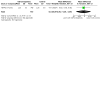

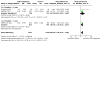
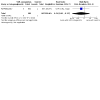
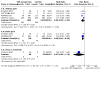
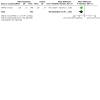


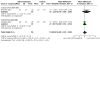

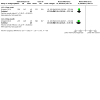
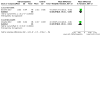
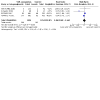

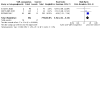
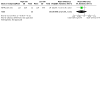




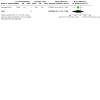
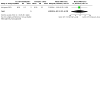


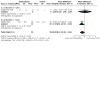


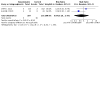

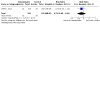
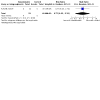
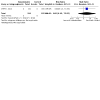

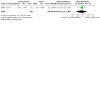

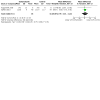

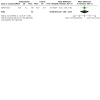
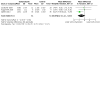

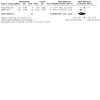

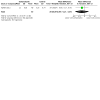
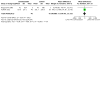
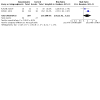
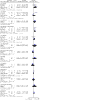

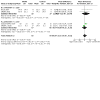

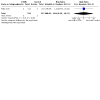
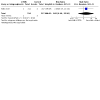

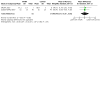
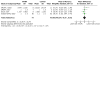


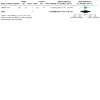


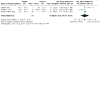
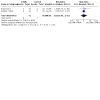
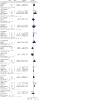
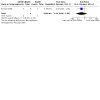

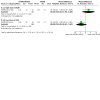
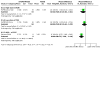
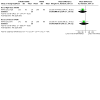

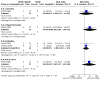
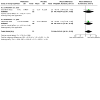
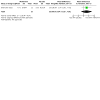

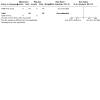
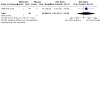
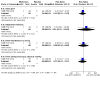
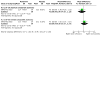



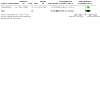
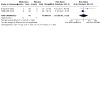
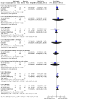

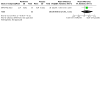
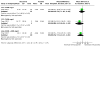
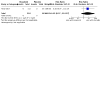
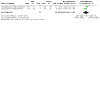

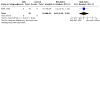
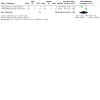
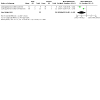



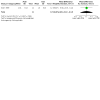


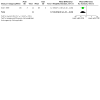
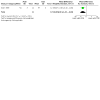

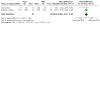




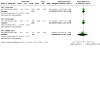


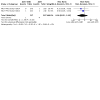
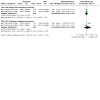
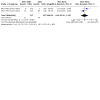
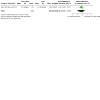
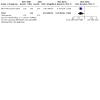

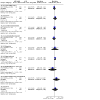
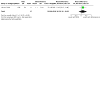
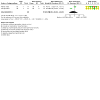

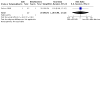


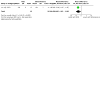
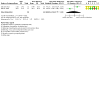


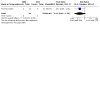
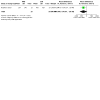
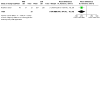
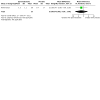

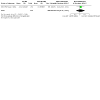

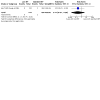
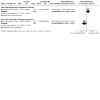
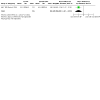

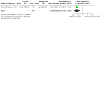
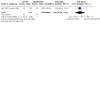

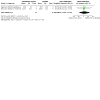
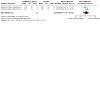
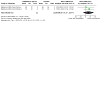

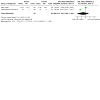

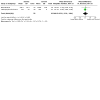

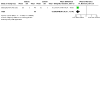

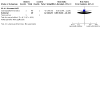

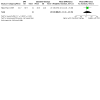
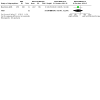
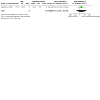



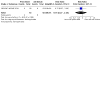

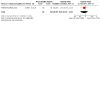
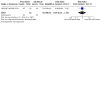
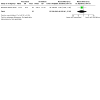
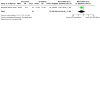

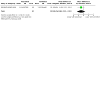

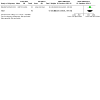




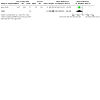
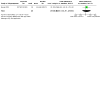
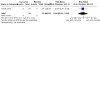
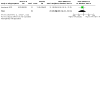


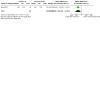
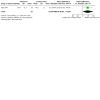
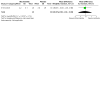


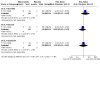
Update of
-
Interventions for preventing the progression of autosomal dominant polycystic kidney disease.Cochrane Database Syst Rev. 2015 Jul 14;2015(7):CD010294. doi: 10.1002/14651858.CD010294.pub2. Cochrane Database Syst Rev. 2015. Update in: Cochrane Database Syst Rev. 2024 Oct 2;10:CD010294. doi: 10.1002/14651858.CD010294.pub3. PMID: 26171904 Free PMC article. Updated.
References
References to studies included in this review
AIPRI 1996 {published data only}
-
- Apperloo AJ, Rensma PL. Effect of benazepril in chronic renal insufficiency. New England Journal of Medicine 1996;335(8):596-7. [MEDLINE: ] - PubMed
-
- Curren CG. Effect of benazepril in chronic renal insufficiency. New England Journal of Medicine 1996;335(8):596-7. [MEDLINE: ] - PubMed
-
- Hogan TJ, Elliott WJ, Seto AH, Bakris GL. Antihypertensive treatment with and without benazepril in patients with chronic renal insufficiency: a US economic evaluation. Pharmacoeconomics 2002;20(1):37-47. [MEDLINE: ] - PubMed
-
- Locatelli F, Carbarns IR, Maschio G, Mann JF, Ponticelli C, Ritz E, et al. Long-term progression of chronic renal insufficiency in the AIPRI Extension Study. The Angiotensin-Converting-Enzyme Inhibition in Progressive Renal Insufficiency Study Group. Kidney International - Supplement 1997;63:S63-6. [MEDLINE: ] - PubMed
-
- Locatelli F, Del Vecchio L, Andrulli S, Marai P, Tentori F. The role of underlying nephropathy in the progression of renal disease. Kidney International - Supplement 2000;75:S49-55. [MEDLINE: ] - PubMed
ALADIN 2013 {published data only}
-
- Caroli A, Perico N, Perna A, Antiga L, Brambilla P, Pisani A, et al. Effect of longacting somatostatin analogue on kidney and cyst growth in autosomal dominant polycystic kidney disease (ALADIN): a randomised, placebo-controlled, multicentre trial. Lancet 2013;382(9903):1485-95. [MEDLINE: ] - PubMed
-
- Pisani A, Ruggenenti P, Remuzzi G, Riccio E, Sabbatini M. Long term effects of octreotide treatment in ADPKD patients with polycystic liver disease (a sub-group analysis of the ALADIN trial) [abstract no: SuO039]. Nephrology Dialysis Transplantation 2015;30(Suppl 3):iii62. [EMBASE: 72206414]
-
- Pisani A, Sabbatini M, Imbriaco M, Riccio E, Rubis N, Prinster A, et al. Long-term effects of octreotide on liver volume in patients with polycystic kidney and liver disease. Clinical Gastroenterology & Hepatology 2016;14(7):1022-30. [MEDLINE: ] - PubMed
-
- Spinelli L, Pisani A, Giugliano G, Trimarco B, Riccio E, Visciano B, et al. Left ventricular dysfunction in ADPKD and effects of octreotide-LAR: a cross-sectional and longitudinal substudy of the ALADIN trial. International Journal of Cardiology 2019;275:145-51. [MEDLINE: ] - PubMed
-
- Visciano B, Pisani A, Ruggenenti P, Perico N, Remuzzi G, Mozzillo GR, et al. Favorable effects of somatostatin analogue on left ventricular LV diastolic function in autosomal dominant polycystic kidney disease (ADPKD): a prospective randomized echocardiographic study [abstract no: TH-PO637]. Journal of the American Society of Nephrology 2012;23(Abstract Suppl):244A.
ALADIN 2 2019 {published data only}2011‐000138‐12
Al Therwani 2017 {published data only}
-
- Al Therwani S, Malmberg ME, Rosenbaek JB, Bech JN, Pedersen EB. Effect of tolvaptan on renal handling of water and sodium, GFR and central hemodynamics in autosomal dominant polycystic kidney disease during inhibition of the nitric oxide system: a randomized, placebo-controlled, double blind, crossover study. BMC Nephrology 2017;18(1):268. [MEDLINE: ] - PMC - PubMed
-
- Malmberg M, Sonderbaek R, Mose F, Jensen J, Ejlersen J, Pedersen E, et al. Effect of tolvaptan on renal plasma flow and glomerular filtration in polycystic kidney disease [abstract no: SP110]. Nephrology Dialysis Transplantation 2018;33(Suppl 1):i381. [EMBASE: 622605663]
-
- Malmberg ME, Sonderbaek RL, Mose FH, Jensen JJ, Ejlersen JA, Pedersen EB, et al. Acute tolvaptan treatment has no immediate effect on renal plasma flow or glomerular filtration rate in polycystic kidney disease [abstract no: SA-PO475]. Journal of the American Society of Nephrology 2018;29(Abstract Suppl):859. [EMBASE: 633735918]
Amro 2016 {published data only}
-
- Amro OW, Paulus JK, Noubary F, Perrone RD. Low osmolar diet and adjusted water intake for vasopressin suppression in ADPKD: a randomized controlled trial [abstract no: SA-PO1094]. Journal of the American Society of Nephrology 2015;26(Abstract Suppl):B3-4. [EMBASE: 641104294]
-
- Amro OW, Paulus JK, Noubary F, Perrone RD. Low osmolar diet and adjusted water intake for vasoprssin suppression in ADPKD [abstract no: PUB716]. Journal of the American Society of Nephrology 2015;26(Abstract Suppl):1054A. [EMBASE: 641104386]
Biao 1997 {published data only}
-
- Biao S. Clinical observation on adult polycystic kidney disease treated with calcitriol and 'qijudihuang mixt' [abstract no: P1057]. Nephrology 1997;3(Suppl 1):S338. [CENTRAL: CN-00460393]
Blazer‐Yost 2021 {published data only}
Braun 2014 {published data only}
Brosnahan 2022 {published data only}
Cadnapaphornchai 2005 {published data only}
-
- Cadnapaphornchai MA, Fick-Brosnahan GM, Duley I, Johnson AM, Strain JD, DeGroff CG, et al. Design and baseline characteristics of participants in the study of antihypertensive therapy in children and adolescents with autosomal dominant polycystic kidney disease (ADPKD). Contemporary Clinical Trials 2005;26(2):211-22. [MEDLINE: ] - PubMed
Cadnapaphornchai 2005 borderline {published data only}
-
- Cadnapaphornchai MA, Fick-Brosnahan GM, Duley I, Johnson AM, Strain JD, DeGroff CG, et al. Design and baseline characteristics of participants in the study of antihypertensive therapy in children and adolescents with autosomal dominant polycystic kidney disease (ADPKD). Contemporary Clinical Trials 2005;26(2):211-22. [MEDLINE: ] - PubMed
Cadnapaphornchai 2005 normotensive {published data only}
-
- Cadnapaphornchai MA, Fick-Brosnahan GM, Duley I, Johnson AM, Strain JD, DeGroff CG, et al. Design and baseline characteristics of participants in the study of antihypertensive therapy in children and adolescents with autosomal dominant polycystic kidney disease (ADPKD). Contemporary Clinical Trials 2005;26(2):211-22. [MEDLINE: ] - PubMed
Cadnapaphornchai 2011 {published data only}
-
- Baliga M, Klawitter J, Christians U, Chonchol M, Gitomer BY, Cadnapaphornchai MA, et al. Identifying urine biomarkers of disease progression in pediatric autosomal dominant polycystic kidney disease patients [abstract no: SA-PO509]. Journal of the American Society of Nephrology 2018;29(Abstract Suppl):868. [EMBASE: 633732657]
-
- Cadnapaphornchai MA, George DM, McFann K, Wang W, Gitomer B, Strain JD, et al. Effect of pravastatin on total kidney volume, left ventricular mass index, and microalbuminuria in pediatric autosomal dominant polycystic kidney disease. Clinical Journal of the American Society of Nephrology: CJASN 2014;9(5):889-96. [MEDLINE: ] - PMC - PubMed
-
- Klawitter J, McFann K, Pennington AT, Wang W, Klawitter J, Christians U, et al. Pravastatin therapy and biomarker changes in children and young adults with autosomal dominant polycystic kidney disease. Clinical Journal of The American Society of Nephrology: CJASN 2015;10(9):1534‐41. [PMID: ] - PMC - PubMed
-
- Klawitter J, McFann K, Pennington AT, Wang W, Klawitter J, Christians U, et al. Pravastatin therapy and biomarker changes in children and young adults with autosomal dominant polycystic kidney disease. Clinical Journal of the American Society of Nephrology: CJASN 2015;10(9):1534-41. [MEDLINE: ] - PMC - PubMed
Chaudhary 2021 {published data only}
-
- Goswami MK, Chowdhury AR. Open-lebel randomized controlled study to evaluate the role of metformin to retard the progression of autosomal polycystic kidney disease and follow-up with magnetic resonance imaging. Indian Journal of Nephrology 2019;29(7 Suppl 1):S60. [EMBASE: 629910015]
-
- Roy Chaudhary A, Goswami M, Sen D, Sircar D, Pandey R. An open label randomized controlled study to evaluate the role of metformin to retard the progression of ADPKD [abstract no: POS-494]. Kidney International Reports 2021;6(4 Suppl):S213-4. [EMBASE: 2011683341]
DIPAK 1 2014 {published data only}
-
- Casteleijn NF, Messchendorp AL, Spithoven EM, D'Agnolo HM, Drenth JP, Fijter JW, et al. The DIPAK 1 study: baseline characteristics and short-term treatment effects of lanreotide versus standard care in patients with later stage ADPKD [abstract no: SP011]. Nephrology Dialysis Transplantation 2016;31(Suppl 1):i90-1. [EMBASE: 72326114]
-
- D'Agnolo HM, Casteleijn NF, De Fijter HW, Messchendorp LA, Peters DJ, Salih M, et al. The association of combined total kidney and liver volume with gastrointestinal symptoms and pain in patients with later stage ADPKD [abstract no: SP018]. Nephrology Dialysis Transplantation 2016;31(Suppl 1):i92. [EMBASE: 72326120]
-
- D'Agnolo HM, Casteleijn NF, Gevers TJ, Fijter H, Gastel MD, Messchendorp AL, et al. The association of combined total kidney and liver volume with pain and gastrointestinal symptoms in patients with later stage autosomal dominant polycystic kidney disease. American Journal of Nephrology 2017;46(3):239-48. [MEDLINE: ] - PubMed
-
- Gansevoort RT, Drenth JP, Fijter JW, Meijer E, Pena MJ, Peters DJ, et al. Renoprotective efficacy and safety of the somatostatin analogue lanreotide in later stage ADPKD [abstract no: LB04]. Nephrology Dialysis Transplantation 2018;33(Suppl 1):1637.
DRINK 2018 {published data only}16794957
-
- El-Damanawi R, Harris TM, Mader LB, Sandford RN, Wilkinson I, Karet FE, et al. Self-monitoring of urine specific gravity using study smartphone applications promotes adherence to high water therapy and facilitates remote data capture in the DRINK randomised trial [abstract no: TH-PO847]. Journal of the American Society of Nephrology 2019;30(Abstract Suppl):340. [EMBASE: 633770764]
-
- El-Damanawi R, Lee M, Harris T, Mader LB, Bond S, Pavey H, et al. Randomised controlled trial of high versus ad libitum water intake in patients with autosomal dominant polycystic kidney disease: rationale and design of the DRINK feasibility trial. BMJ Open 2018;8(5):e022859. [MEDLINE: ] - PMC - PubMed
-
- El-Damanawi R, Lee MC, Harris TM, Mader LB, Pavey H, Wilkinson I, et al. A randomised feasibility trial of high vs ad libitum water intake in autosomal polycystic kidney disease [abstract no: SA-PO483]. Journal of the American Society of Nephrology 2018;29(Abstract Suppl):861. [EMBASE: 633736360]
-
- El-Damanawi R, Lee MC, Harris TM, Mader LB, Sandford RN, Wilkinson I, et al. Pain in autosomal dominant polycystic kidney disease: Results from the DRINK randomised phase 2 trial [abstract no: PUB203]. Journal of the American Society of Nephrology 2019;30(Abstract Suppl):1126. [EMBASE: 633771800]
Ecder 1999 {published data only}
-
- Ecder T, Chapman AB, Brosnahan GM, Edelstein CL, Johnson AM, Schrier RW. Effect of antihypertensive therapy on renal function and urinary albumin excretion in hypertensive patients with autosomal dominant polycystic kidney disease. American Journal of Kidney Diseases 2000;35(3):427-32. [MEDLINE: ] - PubMed
-
- Ecder T, Edelstein CL, Chapman AB, Johnson AM, Tison L, Gill EA, et al. Reversal of left ventricular hypertrophy with angiotensin converting enzyme inhibition in hypertensive patients with autosomal dominant polycystic kidney disease. Nephrology Dialysis Transplantation 1999;14(5):1113-6. [MEDLINE: ] - PubMed
-
- Ecder T, McFann KK, Johnson AM, Chapman CB, Edelstein CL, Tison M, et al. Reversal of left ventricular hypertrophy in autosomal dominant polycystic kidney disease (ADPKD) patients with rigorous blood pressure (BP) control [abstract no: A2768]. Journal of the American Society of Nephrology 2001;12(Program & Abstracts):534A. [CENTRAL: CN-00550560]
-
- Schrier R, McFann K, Johnson A, Chapman A, Edelstein C, Brosnahan G, et al. Cardiac and renal effects of standard versus rigorous blood pressure control in autosomal-dominant polycystic kidney disease: results of a seven-year prospective randomized study. Journal of the American Society of Nephrology 2002;13(7):1733-9. [MEDLINE: ] - PubMed
ELATE 2011 {published data only}
-
- Chrispijn M, Gevers TJ, Hol JC, Monshouwer R, Dekker HM, Drenth JP. Everolimus does not further reduce polycystic liver volume when added to long acting octreotide: Results from a randomized controlled trial in polycystic liver disease patients [abstract no: 1386]. Journal of Hepatology 2013;58(Suppl 1):S557. [EMBASE: 71055656] - PubMed
-
- Chrispijn M, Gevers TJ, Hol JC, Monshouwer R, Dekker HM, Drenth JP. Everolimus does not further reduce polycystic liver volume when added to long acting octreotide: results from a randomized controlled trial. Journal of Hepatology 2013;59(1):153-9. [MEDLINE: ] - PubMed
El Ters 2020 {published data only}
-
- El Ters M, Zhou X, Lepping RJ, Lu P, Mahnken JD, Brooks WM, et al. Biological efficacy and safety of niacinamide in patients with autosomal dominant polycystic kidney disease [abstract no: PO1579]. Journal of the American Society of Nephrology 2020;31:502‐3. [EMBASE: 633703682]
Fassett 2010 {published data only}12608000447358
-
- Fassett RG, Coombes JS, Packham D, Fairley KF, Kincaid-Smith P. Effect of pravastatin on kidney function and urinary protein excretion in autosomal dominant polycystic kidney disease. Scandinavian Journal of Urology & Nephrology 2010;44(1):56-61. [MEDLINE: ] - PubMed
-
- Kincaid-Smith P, Vincent J, Fairley K. Randomised controlled trial of HMG CO A reductase inhibitor in polycystic renal disease in man [abstract no: A1733]. Journal of the American Society of Nephrology 1997;8(Program & Abstracts):375A. [CENTRAL: CN-00446097]
HALT‐PKD Study A 2014 {published data only}
-
- Brosnahan GM, Abebe KZ, Rahbari-Oskovi FF, Moore CG, Bae KT, Schrier RW, et al. Effect of statins on the progression of autosomal dominant polycystic kidney disease ( the HALT PKD investigators) [abstract no: SA-PO877]. Journal of the American Society of Nephrology 2015;26(Abstract Suppl):834A. [EMBASE: 641103981]
-
- Brosnahan GM, Gitomer BY, Wang W, You Z, Nowak KL, Jalal DI, et al. Serum uric acid, total kidney volume and disease progression in autosomal dominant polycystic kidney disease (ADPKD): results from the HALT PKD trial [abstract no: SA-PO608]. Journal of the American Society of Nephrology 2016;27(Abstract Suppl):769-70A. [EMBASE: 641132743]
HALT‐PKD Study B 2014 {published data only}
Higashihara 2008 {published data only}
-
- Higashihara E, Nutahara K, Horie S, Muto S, Hosoya T, Hanaoka K, et al. The effect of eicosapentaenoic acid on renal function and volume in patients with ADPKD. Nephrology Dialysis Transplantation 2008;23(9):2847-52. [MEDLINE: ] - PubMed
Hogan 2010 {published data only}
-
- Hogan M, Masyuk TV, Torres V, King BF, Kim BF, LaRusso NF. OctreotideLAR inhibits hepatorenal cystogenesis in the human polycystic liver diseases [abstract no: 55]. Hepatology 2009;50(Suppl 4):328A. [EMBASE: 70073470]
Kramers 2020 {published data only}6546
-
- Kramers B, Koorevaar I, Aapkes S, Dekkers C, Heerspink HL, Gansevoort R, et al. Both hydrochlorothiazide and metformin ameliorate aquaretic side-effects in ADPKD patients that are treated with tolvaptan [abstract no: SO001]. Nephrology Dialysis Transplantation 2020;35(Suppl 3):iii1. [EMBASE: 633421360]
-
- Kramers BJ, Koorevaar IW, Gastel MD, Goor H, Hallows KR, Heerspink HL, et al. Effects of hydrochlorothiazide and metformin on aquaresis and nephroprotection by a vasopressin V2 receptor antagonist in ADPKD: a randomized crossover trial. Clinical Journal of The American Society of Nephrology: CJASN 2022;17(4):507-17. [PMID: ] - PMC - PubMed
LOCKCYST 2009 {published data only}
-
- Chrispijn M, Nevens F, Gevers TJ, Vanslembrouck R, Oijen MG, Coudyzer W, et al. The long-term outcome of patients with polycystic liver disease treated with lanreotide. Alimentary Pharmacology & Therapeutics 2012;35(2):266-74. [MEDLINE: ] - PubMed
-
- Chrispijn M, Keimpema L, Nevens F, Vanslembrouck R, Oijen MG, Hoffmann AD, et al. Growth of liver volume stops after one year of lanreotide in patients with polycystic livers [abstract no: 66]. Journal of Hepatology 2010;52(Suppl 1):S31. [EMBASE: 70130918]
-
- Keimpema L, Nevens F, Vanslembrouck R, Oijen MG, Hoffmann AL, Dekker HM, et al. Lanreotide reduces the volume of polycystic liver: A randomized, double-blind, placebo-controlled trial [abstract no: 56]. Hepatology 2009;50(Suppl 4):328A. [EMBASE: 70073471] - PubMed
-
- Keimpema L, Nevens F, Vanslembrouck R, Oijen MG, Hoffmann AL, Dekker HM, et al. Lanreotide reduces the volume of polycystic liver: a randomized, double-blind, placebo-controlled trial. Gastroenterology 2009;137(5):1661-8. [MEDLINE: ] - PubMed
Melemadathil 2013 {published data only}
-
- Melemadathil S, Kamal M. Efficacy and safety of sirolimus in reducing cyst volume in patients with autosomal dominant polycystic kidney disease [abstract no: SP010]. Nephrology Dialysis Transplantation 2013;28(Suppl 1):i81-2. [EMBASE: 71075211]
Mora 2013 {published data only}
-
- Mora FP, Codianni P, Liern M, Grammatico D, Vallejo G. Use of rapamycin to reduce the pathologic kidney volume growth in autosomal polycystic kidney disease [abstract no: P-SAT347]. Pediatric Nephrology 2013;28(8):1492. [EMBASE: 71127367]
Nakamura 2001d {published data only}
-
- Nakamura T, Ushiyama C, Takahashi Y, Tanaka A, Shimada N, Ebihara I, et al. Effect of dilazep dihydrochloride on urinary albumin excretion in patients with autosomal dominant polycystic kidney disease. Nephron 2001;88(1):80-2. [MEDLINE: ] - PubMed
Nakamura 2001d hypertensive {published data only}
-
- Nakamura T, Ushiyama C, Takahashi Y, Tanaka A, Shimada N, Ebihara I, et al. Effect of dilazep dihydrochloride on urinary albumin excretion in patients with autosomal dominant polycystic kidney disease. Nephron 2001;88(1):80-2. [MEDLINE: ] - PubMed
Nakamura 2001d normotensive {published data only}
-
- Nakamura T, Ushiyama C, Takahashi Y, Tanaka A, Shimada N, Ebihara I, et al. Effect of dilazep dihydrochloride on urinary albumin excretion in patients with autosomal dominant polycystic kidney disease. Nephron 2001;88(1):80-2. [MEDLINE: ] - PubMed
Nakamura 2012a {published data only}
-
- Nakamura T, Sato E, Fujiwara N, Kawagoe Y, Yamada S, Ueda Y, et al. Changes in urinary albumin excretion, inflammatory and oxidative stress markers in ADPKD patients with hypertension. American Journal of the Medical Sciences 2012;343(1):46-51. [MEDLINE: ] - PubMed
NOCTURNE 2020 {published data only}
-
- Oberdhan D, Sanon M, Agarwal I, Czerwiec FS, Perrone RD. Patient-reported disease burden and urinary impact in autosomal dominant polycystic kidney disease (ADPKD) [abstract no: SA-PO495]. Journal of the American Society of Nephrology 2018;29(Abstract Suppl):864. [EMBASE: 633731755]
Nowak 2019 {published data only}
-
- Nowak KL, Gitomer BY, Farmer-Bailey H, Wang W, George D, Chonchol M, et al. Mineralocorticoid antagonism and vascular function in early autosomal dominant polycystic kidney disease: a randomized- controlled trial [abstract no: FR-PO304]. Journal of the American Society of Nephrology 2017;28(Abstract Suppl):479-80. [EMBASE: 633700139] - PMC - PubMed
-
- Nowak KL, Wang W, Gitomer BY, Jovanovich AJ, Farmer-Bailey H, Chonchol M. Mineralocorticoid antagonism and vascular oxidative stress and inflammation in early autosomal dominant polycystic kidney disease: a randomized -controlled trial [abstract no: FR-PO200]. Journal of the American Society of Nephrology 2017;28(Abstract Suppl):451. [EMBASE: 633700627]
Nowak 2020 {published data only}
-
- Farmer-Bailey H, Cadnapaphornchai MA, You Z, George D, Wang W, Jovanovich A, et al. Curcumin therapy to treat vascular dysfunction in children and young adults with autosomal dominant polycystic kidney disease (ADPKD): Design and baseline characteristics of participants [abstract no: PO1580]. Journal of the American Society of Nephrology 2020;31(Abstract Suppl):503. [EMBASE: 633703722]
-
- Nowak KL, Farmer-Bailey H, Cadnapaphornchai MA, You Z, George D, Wang W, et al. Curcumin therapy to treat vascular dysfunction in children and young adults with autosomal dominant polycystic kidney disease: Design and baseline characteristics of participants. Contemporary Clinical Trials Communications 2020;19:100635. [MEDLINE: ] - PMC - PubMed
-
- Nowak KL, Farmer-Bailey H, Wang W, You Z, Steele C, Cadnapaphornchai MA, et al. Curcumin therapy to treat vascular dysfunction in children and young adults with ADPKD: a randomized controlled trial. Clinical Journal of The American Society of Nephrology: CJASN 2022;17(2):240-50. [PMID: ] - PMC - PubMed
-
- Nowak KL, Farmer-Bailey H, Wang W, You Z, Steele C, Cadnapaphornchai MA, et al. Curcumin therapy to treat vascular dysfunction in children and young adults with autosomal dominant polycystic kidney disease (ADPKD) [abstract no: PO1260]. Journal of the American Society of Nephrology 2021;32(Abstract Suppl):406. [EMBASE: 636331549]
Nutahara 2005 {published data only}
-
- Nutahara K, Higashihara E, Horie S, Kamura K, Tsuchiya K, Mochizuki T, et al. Calcium channel blocker versus angiotensin II receptor blocker in autosomal dominant polycystic kidney disease. Nephron 2005;99(1):c18-23. [MEDLINE: ] - PubMed
Pasari 2019 {published data only}
-
- Pasari A, Balwani M, Trivedi M, Patel M. Role of metformin in ADPKD patients [abstract no: SUN-200]. KI Reports 2019;4(7 Suppl):S242. [EMBASE: 2002179303]
Perrone 2020 {published data only}
-
- Perrone R, Chapman A, Oberdhan D, Czerwiec FS, Sergeyeva O, Ouyang J, et al. A phase 2 dose-ranging study comparing pharmacokinetics (PK), pharmacodynamics (PD), and tolerability of modified release (MR) vs immediate release (IR) tolvaptan (TLV) in autosomal dominant polycystic kidney disease (ADPKD) patients (PT) [abstract no: FP046]. Nephrology Dialysis Transplantation 2019;34(Suppl 1):A58. [EMBASE: 631306349]
PREVENT‐ADPKD 2018 {published data only}12614001216606
-
- Amin S, Sangadi I, Saravanabavan S, Munt A, Allman-Farinelli M, Badve S, et al. Experiences of participants enrolled in a randomized controlled trial of prescribed water intake in autosomal dominant polycystic kidney disease [abstract]. Nephrology 2022;27:48‐49. [DOI: 10.1111/nep.14099] - DOI
-
- Mannix C, Rangan A, Zhang J, Rangan G, Wong AT. Seasonal changes in fluid intake in patients with autosomal dominant polycystic kidney disease [abstract]. Nephrology 2018;23(Suppl 3):64-5. [EMBASE: 623842073]
-
- Mannix C, Wong A, Zhang J, Badve SV, Boudville N, Harris DC, et al. Gender-specific differences in baseline fluid and solute intake in the PREVENT-ADPKD study [abstract no: SA-PO481]. Journal of the American Society of Nephrology 2018;29(Abstract Suppl):860. [EMBASE: 633736290]
-
- Mannix C, Wong A, Zhang J, Lee VW, Harris DC, Sud K, et al. Random daytime spot urine correlates with twenty-four hour urine osmolality in patients with autosomal dominant polycystic kidney disease [abstract no: SA-PO482]. Journal of the American Society of Nephrology 2018;29(Abstract Suppl):860-1. [EMBASE: 633736335]
-
- Rangan G, Allman-Farinelli M, Boudville N, Fernando M, Haloob I, Harris DC, et al. Long-term effect of increasing water intake on repeated self-assessed health-related quality of life (HRQoL) in autosomal dominant polycystic kidney disease. Clinical Kidney Journal 2024;17(7):sfae159. [DOI: 10.1093/ckj/sfae159] [EMBASE: 2033405207] - DOI - PMC - PubMed
RAPYD 2012 {published data only}2007‐006557‐25
-
- Stallone G, Infante B, Bruno F, Bristogiannis C, Grandaliano G, Macarini L, et al. Rapamycin for treatment of type I autosomal dominant polycystic kidney disease (ADPKD) study: a randomized, controlled study [abstract no: SAO041]. Nephrology Dialysis Transplantation 2012;27(Suppl 2):ii46-7. [EMBASE: 70765435] - PubMed
-
- Stallone G, Infante B, Grandaliano G, Bristogiannis C, Macarini L, Mezzopane D, et al. Rapamycin for treatment of type I autosomal dominant polycystic kidney disease (RAPYD-study): a randomized, controlled study. Nephrology Dialysis Transplantation 2012;27(9):3560-7. [MEDLINE: ] - PubMed
RAPYD 2012 high {published data only}
-
- Stallone G, Infante B, Bruno F, Bristogiannis C, Grandaliano G, Macarini L, et al. Rapamycin for treatment of type I autosomal dominant polycystic kidney disease (ADPKD) study: a randomized, controlled study [abstract]. Nephrology Dialysis Transplantation 2012;27(Suppl 2):ii46-7. [EMBASE: 70765435] - PubMed
-
- Stallone G, Infante B, Grandaliano G, Bristogiannis C, Macarini L, Mezzopane D, et al. Rapamycin for treatment of type I autosomal dominant polycystic kidney disease (RAPYD-study): a randomized, controlled study. Nephrology Dialysis Transplantation 2012;27(9):3560-7. [MEDLINE: ] - PubMed
RAPYD 2012 low {published data only}
-
- Stallone G, Infante B, Bruno F, Bristogiannis C, Grandaliano G, Macarini L, et al. Rapamycin for treatment of type I autosomal dominant polycystic kidney disease (ADPKD) study: a randomized, controlled study [abstract]. Nephrology Dialysis Transplantation 2012;27(Suppl 2):ii46-7. [EMBASE: 70765435] - PubMed
-
- Stallone G, Infante B, Grandaliano G, Bristogiannis C, Macarini L, Mezzopane D, et al. Rapamycin for treatment of type I autosomal dominant polycystic kidney disease (RAPYD-study): a randomized, controlled study. Nephrology Dialysis Transplantation 2012;27(9):3560-7. [MEDLINE: ] - PubMed
REPRISE 2017 {published data only}
-
- Edwards ME, Chebib FT, Irazabal MV, Ofstie TG, Bungum LA, Metzger AJ, et al. Long-term administration of tolvaptan in autosomal dominant polycystic kidney disease [Erratum in: Clin J Am Soc Nephrol. 2019 Jun 7;14(6):910]. Clinical Journal of the American Society of Nephrology: CJASN 2018;13(8):1153-61. [MEDLINE: ] - PMC - PubMed
-
- Torres VE, Chapman AB, Devuyst O, Gansevoort RT, Perrone RD, Koch G, et al. Tolvaptan in later-stage autosomal dominant polycystic kidney disease. New England Journal of Medicine 2017;377(20):1930-42. [MEDLINE: ] - PubMed
-
- Torres VE, Chapman AB, Devuyst O, Gansevoort RT, Perrone RD, Koch GG, et al. Tolvaptan slows eGFR decline in later-stage ADPKD [abstract no: SA-OR121]. Journal of the American Society of Nephrology 2017;28(Abstract Suppl):B1. [EMBASE: 633704426]
Ruggenenti 2005 {published data only}
-
- Ruggenenti P, Remuzzi A, Ondei P, Fasolini G, Antiga L, Ene-Iordache B, et al. Safety and efficacy of long-acting somatostatin treatment in autosomal-dominant polycystic kidney disease. Kidney International 2005;68(1):206-16. [MEDLINE: ] - PubMed
Schaefer 2019 {published data only}2016‐000187‐42
-
- Mekahali D, Guay-Woodford L, Cadnapaphornchai MA, Greenbaum LA, Litwin M, Seeman T, et al. Randomized, placebo-controlled, phase 3B trial of tolvaptan in the treatment of children and adolescents with autosomal dominant polycystic kidney disease (ADPKD): 1-year data [abstract no: FC130]. Nephrology Dialysis Transplantation 2021;36(Suppl 1):i89. [EMBASE: 635917711]
-
- Mekahali D, Guay-Woodford L, Cadnapaphornchai MA, Greenbaum LA, Litwin M, Seeman T, et al. Randomized, placebo-controlled, phase 3B trial of tolvaptan in the treatment of children and adolescents with autosomal dominant polycystic kidney disease (ADPKD): 1-year data [abstract no: OP-22]. Pediatric Nephrology 2021;36(10):3293.
-
- Mekahli D, Guay-Woodford L, Cadnapaphornchai M, Greenbaum L, Litwin M, Seeman T, et al. Phase 3 trial of tolvaptan in pediatric autosomal dominant polycystic kidney disease (ADPKD): two years of data from an open-label extension [abstract]. Pediatric Nephrology 2023;38(Suppl 2):S46‐7. [DOI: 10.1007/s00467-023-06094-7] [EMBASE: 642728481] - DOI
-
- Mekahli D, Guay-Woodford LM, Cadnapaphornchai MA, Goldstein SL, Dandurand A, Jiang H, et al. Estimating risk of rapid disease progression in pediatric patients with autosomal dominant polycystic kidney disease: a randomized trial of tolvaptan. Pediatric Nephrology 2024;39(5):1481‐90. [DOI: 10.1007/s00467-023-06239-8] [PMID: ] - DOI - PMC - PubMed
-
- Mekahli D, Guay-Woodford LM, Cadnapaphornchai MA, Greenbaum LA, Litwin M, Seeman T, et al. Tolvaptan for children and adolescents with autosomal dominant polycystic kidney disease: randomized controlled trial. Clinical Journal of the American Society of Nephrology: CJASN 2023;18(1):36‐46. [DOI: 10.2215/CJN.0000000000000022] [PMID: ] - DOI - PMC - PubMed
SIRENA 2010 {published data only}
-
- Tonshoff B. Sirolimus therapy in autosomal polycystic kidney disease [Sirolimus-therapie bei autosomal-dominanter polyzystischer nierendegeneration]. Nephrologe 2010;5(4):322‐3. [EMBASE: 50955871]
SIRENA 2 2016 {published data only}
-
- Ruggenenti P, Gentile G, Perico N, Perna A, Barcella L, Trillini M, et al. Effect of sirolimus on disease progression in patients with autosomal dominant polycystic kidney disease and CKD stages 3b-4. Clinical Journal of The American Society of Nephrology: CJASN 2016;11(5):785-94. [PMID: ] - PMC - PubMed
Soliman 2009 {published data only}
-
- Soliman A, Zamil S, Lotfy A, Ismail E. Sirolimus produced S-shaped effect on adult polycystic kidneys after 2-year treatment. Transplantation Proceedings 2012;44(10):2936–9. [MEDLINE: ] - PubMed
-
- Soliman AR, Ismail E, Zamil S, Lotfy A. Sirolimus therapy for patients with adult polycystic kidney disease: a pilot study. Transplantation Proceedings 2009;41(9):3639–41. [MEDLINE: ] - PubMed
-
- Soliman AR, Ismail E. Sirolimus therapy for patients with adult polycystic kidney disease - a pilot study [abstract no: TH-PO053]. Journal of the American Society of Nephrology 2008;19(Abstracts Issue):123A. [CENTRAL: CN-00716073] - PubMed
SUISSE ADPKD 2007 {published data only}
-
- Braun M, Young J, Reiner CS, Poster D, Wuthrich RP, Serra AL. Ovarian toxicity from sirolimus. New England Journal of Medicine 2012;366(11):1062-4. [MEDLINE: ] - PubMed
-
- Serra A, Poster D, Kistler AD, Krauer F, Raina F, Voneckardstein A, et al. Safety, tolerability and adherence of sirolimus in autosomal dominant polycystic kidney disease [abstract no: 2.5]. Swiss Medical Weekly 2008;138(Suppl 167):4S. [CENTRAL: CN-01912317]
-
- Serra AL, Kistler AD, Poster D, Krauer F, Senn O, Raina S, et al. Safety and tolerability of sirolimus treatment in patients with autosomal dominant polycystic kidney disease. Nephrology Dialysis Transplantation 2009;24(11):3334-42. [MEDLINE: ] - PubMed
TAME‐PKD 2018 {published data only}
-
- Hallows KR, Abebe KZ, Li H, Saitta B, Althouse AD, Bae KT, et al. Association of longitudinal urinary metabolic biomarkers with ADPKD severity and response to metformin in TAME-PKD clinical trial participants. KI Reports 2023;8(3):467‐77. [DOI: 10.1016/j.ekir.2022.11.019] [PMID: ] - DOI - PMC - PubMed
-
- Seliger SL, Abebe KZ, Hallows KR, Miskulin D, Perrone RD, Watnick TJ, et al. Design and methods of a randomized controlled trial of metformin in ADPKD (TAME-PKD) [abstract no: PUB388]. Journal of the American Society of Nephrology 2017;28(Abstract Suppl):1063. [EMBASE: 633704216]
Temmerman 2012 {published data only}
-
- Temmerman F, Vanslembrouck R, Coudyzer W, Bammens B, Laleman W, Cassiman D, et al. The reduction in liver volume in polycystic liver disease with lanreotide is dose dependent and is most pronounced in patients with the highest liver volume [abstract no: 1395]. Journal of Hepatology 2012;56(Suppl 2):S547. [EMBASE: 70749518]
TEMPO 248 & 249 2005 {published data only}
-
- Chapman AB, Torres VE, Grantham JJ, Shoaf SS, Ouyang JJ, Czerwiec FS. A phase IIB pilot study of the safety and efficacy of tolvaptan, a vasopressin V2 receptor antagonist (V2RA), in patients with ADPKD [abstract no: F-FC139]. Journal of the American Society of Nephrology 2005;16:68A. [CENTRAL: CN-00653783]
-
- Grantham JJ, Chapman AB, Torres VE, Ouyang JJ, Shoaf SE, Czerwiec FS. Acute and chronic osmostasis after vasopressin V2 receptor inhibition with tolvaptan in ADPKD [abstract no: F-PO106]. Journal of the American Society of Nephrology 2005;16(October):361A. [CENTRAL: CN-00653784]
-
- Torres VE, Wang X, Ward CJ, Grantham JJ, Chapman AB, Ouyang JJ, et al. Urine aquaporin 2 and cyclic AMP responses to tolvaptan administration in autosomal dominant polycystic kidney disease [abstract no: F-PO108]. Journal of the American Society of Nephrology 2005;16(October):361A. [CENTRAL: CN-00653785]
TEMPO 250 2011 {published data only}
-
- Torres VE, Grantham JJ, Chapman AB, Watnick T, Kedzierski K, Ouyang JJ, et al. Phase 2 open-label study to determine safety, tolerability and efficacy of split-dose tolvaptan in ADPKD [abstract no: SA-PO077]. Journal of the American Society of Nephrology 2007;18:361-2A. [CENTRAL: CN-00653786]
TEMPO 3:4 2011 {published data only}
-
- Casteleijn NF, Blais JD, Chapman AB, Czerwiec FS, Devuyst O, Higashihara E, et al. Tolvaptan and kidney pain in patients with autosomal dominant polycystic kidney disease: secondary analysis from a randomized controlled trial. American Journal of Kidney Diseases 2017;69(2):210-9. [MEDLINE: ] - PMC - PubMed
-
- Casteleijn NF, Messchendorp AL, Bae KT, Higashihara E, Kappert P, Meijer E, et al. Vasopressin V2 receptor antagonism induced polyuria in ADPKD patients does not result in an increase in ureter width [abstract no: FP056]. Nephrology Dialysis Transplantation 2015;30(Suppl 3):iii83. [EMBASE: 72206477]
-
- Cornec-Le Gall E, Blais JD, Irazabal MV, Devuyst O, Gansevoort RT, Perrone RD, et al. Can we further enrich autosomal dominant polycystic kidney disease clinical trials for rapidly progressive patients? Application of the PROPKD score in the TEMPO trial. Nephrology Dialysis Transplantation 2018;33(4):645-52. [MEDLINE: ] - PMC - PubMed
-
- Dahl NK, Chebib FT, Rahbari-Oskoui FF, Japes H, Jiang H, Tracy LR, et al. Tolvaptan modifies patient risk class distribution over time in autosomal dominant polycystic kidney disease (ADPKD): an analysis of data from the TEMPO 3: 4 trial [abstract no: TH-PO413]. Journal of the American Society of Nephrology : JASN 2022;33:161. [CENTRAL: CN-02500387]
Tesar 2017 {published data only}
-
- Ciechanowski K, Tesar V, Pei YP, Barash I, Shannon M, Li R, et al. Efficacy and safety of bosutinib in autosomal dominant polycystic kidney disease: a phase 2, randomized, double-blind, placebo-controlled study [abstract no: SA-PO1093]. Journal of the American Society of Nephrology 2015;26(Abstract Suppl):B3. [EMBASE: 641104283]
Uchiyama 2021 {published data only}000037550
-
- Uchiyama K, Ishibashi Y. The effect of trichlormethiazide in patients with autosomal dominant polycystic kidney disease using tolvaptan: a randomized cross-over controlled trial [abstract no: PO1543]. Journal of the American Society of Nephrology 2020;31(Abstract Suppl):492. [EMBASE: 633702850]
Ulusoy 2010 {published data only}
-
- Ulusoy S, Ozkan G, Orem C, Kaynar K, Kosucu P, Kiris A. A comparison of the effects of ramipril and losartan on blood pressure control and left ventricle hypertrophy in patients with autosomal dominant polycystic kidney disease. Renal Failure 2010;32(8):913-7. [MEDLINE: ] - PubMed
van Dijk 2001 {published data only}
-
- Dijk MA, Kamper AM, Veen S, Souverijn JH, Blauw GJ. Effect of simvastatin on renal function in autosomal dominant polycystic kidney disease. Nephrology Dialysis Transplantation 2001;16(11):2152-7. [MEDLINE: ] - PubMed
van Dijk 2003 {published data only}
-
- Dijk MA, Breuning MH, Duiser R, Es LA, Westendorp RG. No effect of enalapril on progression in autosomal dominant polycystic kidney disease. Nephrology Dialysis Transplantation 2003;18(11):2314-20. [MEDLINE: ] - PubMed
Vendramini 2021 {published data only}4X92FR
-
- Vendramini LC, Rodrigues FG, Dalboni MA, Carvalho Junior JT, Batista MDC, Nishiura JL, et al. Effects of cholecalciferol supplementation in Autosomal Dominant Polycystic Kidney Disease (ADPKD) patients. Human Nutrition & Metabolism 2021;24:200121. [DOI: 10.1016/j.hnm.2021.200121] [EMBASE: 2011301194] - DOI
Walz 2010 {published data only}
-
- Walz G, Budde K, Mannaa M, Nurnberger J, Wanner C, Sommerer C, et al. Everolimus in patients with autosomal dominant polycystic kidney disease. New England Journal of Medicine 2010;363(9):830-40. [MEDLINE: ] - PubMed
Watson 1999 {published data only}
-
- Watson ML, Macnicol AM, Borg-Costanzi J, Vareesanghip K, Chauveau D, Cohen G, et al. A long-term comparison of the effects of renal function of BP control with either atenolol (A) or enalapril (E) in polycystic kidney disease (PKD) [abstract]. Journal of the American Society of Nephrology 1999;10(Program & Abstracts):428A. [CENTRAL: CN-01912322]
Zeltner 2008 {published data only}
-
- Mueller H, Schmieder RE, Zeltner R, Poliak R, Graf S, Schulze BD. Determinants for the treatment of hypertensive patients with autosomal dominant polycystic kidney disease (ADPKD): choice of drug versus blood pressure (BP) control [abstract no: F-PO211]. Journal of the American Society of Nephrology 2003;14(Nov):109A. [CENTRAL: CN-00653777]
-
- Zeltner R, Poliak R, Stiasny B, Schmieder RE, Schulze BD. Renal and cardiac effects of antihypertensive treatment with ramipril vs metoprolol in autosomal dominant polycystic kidney disease. Nephrology Dialysis Transplantation 2008;23(2):573-9. [MEDLINE: ] - PubMed
References to studies excluded from this review
Davis 2018 {published data only}
-
- Davis S, Gralla J, Chan L, Wiseman A, Edelstein CL. Effect of sirolimus on native total kidney volume after transplantation in patients with autosomal dominant polycystic kidney disease: a randomized controlled pilot study. Transplantation Proceedings 2018;50(5):1243-8. [MEDLINE: ] - PubMed
Dinh 2023 {published data only}
-
- Dinh A, Dishy V, Waggoner JR, Csonka D, Shi Y, Gonzalez-Villalobos RA, et al. First-in-human study of an mTORC1-selective inhibitor for the treatment of ADPKD [abstract]. Journal of the American Society of Nephrology 2023;34:206.
Doulton 2006 {published data only}
-
- Doulton TW, Saggar-Malik AK, He FJ, Carney C, Markandu ND, Sagnella GA, et al. The effect of sodium and angiotensin-converting enzyme inhibition on the classic circulating renin-angiotensin system in autosomal-dominant polycystic kidney disease patients. Journal of Hypertension 2006;24(5):939-45. [MEDLINE: ] - PubMed
Elue 2018 {published data only}
-
- Elue KI, Gwede M, Madhwala A, Kanabolo DL, McGill RL, Zisman AL, et al. Smart water bottle technology and adherence to fluid prescription in ADPKD patients [abstract no: SA-PO484]. Journal of the American Society of Nephrology 2018;29(Abstract Suppl):861. [EMBASE: 633736376]
FALCON 2021 {published data only}
-
- Chapman A, Appel GB, Block GA, Chin MP, Goldsberry A, Meyer CJ, et al. Trial design for phase 3 FALCON: evaluation of the safety, tolerability, and efficacy of bardoxolone methyl in patients with autosomal dominant polycystic kidney disease (ADPKD) [abstract no: 55]. American Journal of Kidney Diseases 2021;77(4):583. [EMBASE: 2011318927]
Hogan 2016 {published data only}
-
- Hogan MC, Masyuk TV, Ofstie TG, BanksC, Edwards ME, Irazabal MV, et al. Randomized, placebo controlled double blind clinical trial of the somatostatin analog pasireotide LAR for patients with ADPKD or ADPLD with severe liver involvement [abstract no: FR-OR001]. Journal of the American Society of Nephrology 2016;27(Abstract Suppl):34A. [EMBASE: 641131859]
-
- Hogan MC, Masyuk TV, Vaughan L, Banks C, Ofstie T, Edwards M, et al. Randomized, placebo controlled double blind clinical trial of the pan-somatostatin agonist pasireotide LAR for patients with ADPKD or ADPLD with severe liver involvement [abstract no: 346]. Hepatology 2016;64(1 Suppl 1):177‐8A. [EMBASE: 612595536]
ISRCTN57653760 {published data only}ISRCTN57653760
-
- O'Shaugnessy K. A rotation study through the main therapeutic classes of antihypertensive in patients with polycystic kidney disease and hypertension. www.isrctn.com/ISRCTN57653760 (accessed 2 August 2024).
MANGROVE 2022 {published data only}
-
- Gansevoort RT, Pisani A, Hueso M, Van den Bergh D, Hettema W, Muller K, et al. The MANGROVE Phase 2 Trial: study design and baseline characteristics of patients with autosomal dominant polycystic kidney disease [abstract]. Journal of the American Society of Nephrology 2022;33:154. [EMBASE: 639546967]
Nakamura 2005a {published data only}
-
- Nakamura T, Sugaya T, Kawagoe Y, Ueda Y, Osada S, Koide H. Candesartan reduces urinary fatty acid-binding protein excretion in patients with autosomal dominant polycystic kidney disease. American Journal of the Medical Sciences 2005;330(4):161-5. [MEDLINE: ] - PubMed
Naver 2023 {published data only}
NCT05281328 {published data only}
-
- NCT05281328. A trial to assess the efficacy and safety of octreotide subcutaneous depot in patients With PLD. https://clinicaltrials.gov/ct2/show/NCT05281328 (registered: 7 March 2022).
References to studies awaiting assessment
BEET‐PKD 2022 {published data only}
-
- Sagar P, Munt A, Saravanabavan S, Elhindi J, Nguyen B, Chau K, et al. Recruitment for a double-blind, randomized, placebo-controlled trial to determine the effect of beetroot juice on reducing blood pressure in autosomal dominant polycystic kidney disease (BEET-PKD) [abstract]. Nephrology 2022;27(Suppl 1):74. [DOI: 10.1111/nep.14100] [EMBASE: 639448552] - DOI
-
- Sagar PS, Munt A, Saravanabavan S, Vahedi FA, Elhindi J, Nguyen B, et al. Efficacy of beetroot juice on reducing blood pressure in hypertensive adults with autosomal dominant polycystic kidney disease (BEET-PKD): study protocol for a double-blind, randomised, placebo-controlled trial. Trials [Electronic Resource] 2023;24(1):482. [DOI: 10.1186/s13063-023-07519-2] [PMID: ] - DOI - PMC - PubMed
IMPROVE‐PKD 2023 {published data only}
-
- Dumont A, Hamzaoui M, Guerrot D, Bellien J. Chronic dopamine receptor stimulation improves endothelial function and hemodynamics in autosomal dominant polycystic kidney disease [abstract no: P.138]. Artery Research 2023;29(Suppl 1):S43. [DOI: 10.1007/s44200-022-00028-8] [EMBASE: 640558674] - DOI
-
- Dumont A, Hamzaoui M, Iacob M, Bertrand D, Remy-Jouet I, Hanoy M, et al. Chronic endothelial dopamine receptor stimulation improves endothelial function and hemodynamics in autosomal dominant polycystic kidney disease (IMPROVE-PKD) [abstract no: CO-001]. Fundamental & Clinical Pharmacology 2023;37(S1):7. [DOI: 10.1111/fcp.12905] [EMBASE: 641818499] - DOI - PubMed
KETO‐ADPKD 2023 {published data only}
-
- Cukoski S, Kuhn A, Lindemann CH, Arjune S, Meyer F, Schomig T, et al. Ketosis moderates the effect on kidney volume in dietary interventions for ADPKD-more insights on the KETO ADPKD trial [abstract no: 2160]. Nephrology Dialysis Transplantation 2024;39(Suppl 1):i1208. [DOI: 10.1093/ndt/gfae069.738] - DOI
-
- Cukoski S, Lindemann CH, Arjune S, Todorova P, Brecht T, Kühn A, et al. Feasibility and impact of ketogenic dietary interventions in polycystic kidney disease: kETO-ADPKD-a randomized controlled trial. Cell Reports Medicine 2023;4(11):101283. [DOI: 10.1016/j.xcrm.2023.101283] [PMID: ] - DOI - PMC - PubMed
Nowak 2021 {published data only}
-
- Nowak KL, Catenacci V, Kline TL, Wang W, You Z, Bing K, et al. Weight loss to slow cyst growth in autosomal dominant polycystic kidney disease (ADPKD) [abstract no: PO1251]. Journal of the American Society of Nephrology 2021;32:404. [EMBASE: 636331204]
Rastogi 2023 {published data only}
-
- Rastogi A, Fada G, Rahbari-Oskoui F, Park M, Dahl N, Perrone R, et al. Tesevatinib (KD019) vs placebo for ADPKD: results of the PH2B trial [abstract no: 348]. American Journal of Kidney Diseases 2023;81(4 Suppl 1):S102. [EMBASE: 2023257443]
Staged‐PKD 2020 {published data only}153922017‐004084‐12U1111‐1202‐0775
-
- Gansevoort RT, Hariri A, Minini P, Ahn C, Chapman AB, Horie S, et al. Venglustat, a novel glucosylceramide synthase inhibitor, in patients at risk of rapidly progressing ADPKD: primary results of a double-blind, placebo-controlled, phase 2/3 randomized clinical trial. American Journal of Kidney Diseases 2023;81(5):517‐27. [DOI: 10.1053/j.ajkd.2022.10.016] - DOI - PubMed
-
- Perrone RD, Hariri A, Minini P, Ahn C, Chapman AB, Horie S, et al. Staged-PKD: An enriched, seamless, two-stage study for venglustat assessment in ADPKD [abstract no: PO1577]. Journal of the American Society of Nephrology 2020;31(Abstract Suppl):502. [EMBASE: 633703645]
-
- Perrone RD, Hariri A, Minini P, Chapman AB, Horie S, Knebelmann B, et al. Staged-PKD: patient enrichment and modeling-driven efficient ADPKD trial design [abstract no: PO1578]. Journal of the American Society of Nephrology 2020;31(Abstract Suppl):502. [EMBASE: 633703679]
Trillini 2023 {published data only}
-
- Trillini M, Caroli A, Perico N, Remuzzi A, Brambilla P, Villa G, et al. Effects of octreotide-long-acting release added-on tolvaptan in patients with autosomal dominant polycystic kidney disease: pilot, randomized, placebo-controlled, cross-over trial. Clinical Journal of the American Society of Nephrology: CJASN 2023;18(2):223‐33. [DOI: 10.2215/CJN.0000000000000049] [PMID: ] - DOI - PMC - PubMed
WATER 2024 {published data only}
-
- Geertsema P, Koorevaar IW, Ipema K, Kramers BJ, Casteleijn NF, Gansevoort RT, et al. Effects of salt and protein intake on polyuria in tolvaptan-treated ADPKD patients: a randomized controlled trial [abstract]. Journal of the American Society of Nephrology 2023;34:208. [EMBASE: 642701251]
References to ongoing studies
CTRI/2022/05/042904 {published data only}2022/05/042904
-
- CTRI/2022/05/042904. A clinical trial to study effect of a drug metformin in slowing progression of autosomal dominant polycystic kidney disease. https://trialsearch.who.int/Trial2.aspx?TrialID=CTRI/2022/05/042904 (date accessed: 13 August 2024).
-
- Venkatasubramanian V, Sethi J. Metformin versus standard of care in slowing progression of autosomal dominant polycystic kidney disease and correlation with total kidney volume and plasma copeptin levels [abstract]. Indian Journal of Nephrology 2023;33(Suppl 1):S13. [EMBASE: 643425980]
CTRI/2022/09/045945 {published data only}2022/09/045945
-
- CTRI/2022/09/045945. Tolvaptan versus water therapy in autosomal dominant polycystic kidney disease. https://trialsearch.who.int/Trial2.aspx?TrialID=CTRI/2022/09/045945 (accessed August 2024).
Gan 2019 {published data only}16009914
-
- Gan J, Wu Y, Gong X, Ma Y, Yu S, Gao J. Yinang formulation versus placebo granules as a treatment for chronic kidney disease stages III-IV in patients with autosomal dominant polycystic kidney disease: study protocol for a double-blind placebo-controlled randomized clinical trial. Trials [Electronic Resource] 2019;20(1):481. [MEDLINE: ] - PMC - PubMed
Gitomer 2024 {published data only}
-
- Gitomer BY, Wang W, George D, Nowak KL, Britz M, Klawitter J, et al. Baseline characteristics of participants in statin therapy in patients with early-stage ADPKD clinical trial [abstract]. Journal of the American Society of Nephrology 2023;34:209‐10. [EMBASE: 642701511]
GREASE II 2020 {published data only}
-
- Pezzuoli C, Testa F, Giovanella S, Ligabue G, Marchio M, Biagini G, Magistroni R. GREASE II: a phase ii randomized, 24-month, parallel-group, superiority study to evaluate the efficacy of a ketogenic diet in ADPKD patients [abstract no: 5187]. Nephrology Dialysis Transplantation 2023;38:i1134‐5. [DOI: 10.1093/ndt/gfad063d_5187] [EMBASE: 641942841] - DOI
-
- Testa F, Marchio M, D'Amico R, Giovanella S, Ligabue G, Fontana F, et al. GREASE II. A phase II randomized, 12-month, parallel-group, superiority study to evaluate the efficacy of a Modified Atkins Diet in Autosomal Dominant Polycystic Kidney Disease patients. PharmaNutrition 2020;13:100206. [EMBASE: 2006974265]
HYDRO‐PROTECT 2024 {published data only}
-
- Bais T, Meijer E, Kramers BJ, Vart P, Vervloet M, Salih M, et al. HYDROchlorothiazide versus placebo to PROTECT polycystic kidney disease patients and improve their quality of life: study protocol and rationale for the HYDRO-PROTECT randomized controlled trial. Trials 2024;25(1):120. [DOI: 10.1186/s13063-024-07952-x] - DOI - PMC - PubMed
IMPEDE‐PKD 2021 {published data only}
-
- Mallett A. Implementation of metformin theraPy to Ease DEcline of kidney function in PKD (IMPEDE-PKD). clinicaltrials.gov/ct2/show/NCT04939935 (first received 25 June 2021).
jRCT2011230055 {published data only}jRCT2011230055
-
- jRCT2011230055. Phase IIa study of tamibarotene in patients with ADPKD [Phase IIa clinical trial of tamibarotene in patients with autosomal dominant polycystic kidney disease]. https://trialsearch.who.int/Trial2.aspx?TrialID=JPRN-jRCT2011230055 (registered 22 December 2023).
NCT00345137 {published data only}
-
- Effects of systemic NO-inhibition on renal hemodynamics in patients with polycystic kidney disease and chronic glomerulonephritis [Phase 1 study of systemic effects of Ng-monomethyl-L-arginine on renal hemodynamics in patients with polycystic kidney disease and chronic glomerulonephritis]. www.clinicaltrials.gov/ct2/show/NCT00345137 (first posted 27 June 2006).
NCT01932450 {published data only}
-
- Radiofrequency ablation for ADPKD blood pressure and disease progression control (RAFALE) [A randomized, open-label study investigating the effect of bilateral renal artery sympathetic denervation by catheter-based radiofrequency ablation on blood pressure and disease progression in autosomal dominant polycystic kidney disease]. www.clinicaltrials.gov/ct2/show/NCT01932450 (first posted 30 August 2013).
NCT02127437 {published data only}
-
- Lanreotide In Polycystic Kidney Disease Study (LIPS). www.clinicaltrials.gov/study/NCT02127437 (first posted 30 April 2014).
NCT05228574 {published data only}
-
- NCT05228574. Treatment of vascular stiffness in ADPKD (TRAMPOLINE) [Treatment of vascular stiffness in patients with autosomal dominant polycystic kidney disease]. https://clinicaltrials.gov/show/NCT05228574 2022.
NCT05460169 {published data only}
-
- NCT05460169. Renal denervation in ADPKD- RDN-ADPKD study [Effect of renal denervation in hypertensive patients with autosomal dominant polycystic kidney disease]. https://clinicaltrials.gov/ct2/show/NCT05460169 2022.
NCT05510115 {published data only}
-
- NCT05510115. Feasibility of study of empagliflozin in patients with autosomal dominant polycystic kidney disease. https://clinicaltrials.gov/ct2/show/NCT05510115 (registered: 11 August 2022).
NCT05521191 {published data only}
-
- NCT05521191. A study of RGLS8429 in patients with autosomal dominant polycystic kidney disease [A phase 1b, double-blind, placebo-controlled, multiple ascending dose and an open-label fixed-dose study in patients with autosomal dominant polycystic kidney disease to evaluate the safety, tolerability, pharmacodynamics, and pharmacokinetics of RGLS8429]. https://clinicaltrials.gov/ct2/show/NCT05521191 (registered: 24 August 2022).
NCT05870007 {published data only}
-
- NCT05870007. Atorvastatin and alkali therapy in patients with autosomal dominant polycystic kidney disease [Atorvastatin and alkali therapy in patients with autosomal dominant polycystic kidney disease, a pilot trial for safety and feasibility]. https://clinicaltrials.gov/show/NCT05870007 (registered: 12 April 2023).
NCT06289998 {published data only}
-
- NCT06289998. Study of tamibarotene in patients With ADPKD [Phase IIa clinical trial of tamibarotene in patients with autosomal dominant polycystic kidney disease]. https://clinicaltrials.gov/ct2/show/NCT06289998 (registered 18 February 2024).
NCT06291116 {published data only}
-
- NCT06291116. Safety of rotigotine in patients with autosomal dominant polycystic kidney disease (ETERNAL-PKD). https://clinicaltrials.gov/ct2/show/NCT06291116 (registered 26 February 2024).
NCT06391450 {published data only}
-
- NCT06391450. Study of empagliflozin in patients with autosomal dominant polycystic kidney disease (EMPA-PKD). https://clinicaltrials.gov/ct2/show/NCT06391450 (registered 15 April 2024). - PMC - PubMed
NCT06435858 {published data only}
-
- NCT06435858. Short-term effects of an SGLT2 inhibitor on divalent ions in autosomal dominant polycystic kidney disease (SIDIA). https://clinicaltrials.gov/ct2/show/NCT06435858 (registered 24 May 2024).
NCT06496542 {published data only}
-
- NCT06496542. Renal oxygen consumption, insulin sensitivity, and daily caloric restriction in ADPKD (EXPLORE). https://clinicaltrials.gov/ct2/show/NCT06496542 (registered 3 July 2024).
Steele 2023 {published data only}
-
- Steele C, Coleman ER, George D, Farmer-Bailey H, Ramanathan S, Gregory A, et al. Time-restricted feeding and autosomal dominant polycystic kidney disease: a pilot, randomized clinical trial [abstract]. Journal of the American Society of Nephrology 2023;34:206. [EMBASE: 642700858]
Vienna RAP 2015 {published data only}
Additional references
Besse 2019
Capuano 2022
-
- Capuano I, Buonanno P, Riccio E, Amicone M, Pisani A. Therapeutic advances in ADPKD: the future awaits. Journal of Nephrology 2022;35(2):397-415. [DOI: ] [PMID: ] - PubMed
Chang 2012
-
- Chang MY, Ong AC. Mechanism-based therapeutics for autosomal dominant polycystic kidney disease: recent progress and future prospects. Nephron 2012;120(1):c25-34. [MEDLINE: ] - PubMed
Cho 2017
-
- Cho Y, Tong A, Craig JC, Mustafa RA, Chapman A, Perrone RD. Establishing a Core Outcome Set for Autosomal Dominant Polycystic Kidney Disease: Report of the Standardized Outcomes in Nephrology-Polycystic Kidney Disease (SONG-PKD) Consensus Workshop. American Journal of Kidney Diseases 2021;77(2):255-63. [DOI: 10.1053/j.ajkd.2020.05.024] [PMID: ] - DOI - PubMed
Cordido 2017
ERA‐EDTA 2011
-
- ERA-EDTA Registry. ERA-EDTA Registry Annual Report 2011. Academic Medical Center, Department of Medical Informatics, Amsterdam, The Netherlands, 2013. www.era-online.org/wp-content/uploads/2022/11/ERA-Registry-Annual-Report... (accessed 2 August 2024).
Gattone 2003
-
- Gattone VH 2nd, Wang X, Harris PC, Torres VE. Inhibition of renal cystic disease development and progression by a vasopressin V2 receptor antagonist. Nature Medicine 2003;9(10):1323–6. [MEDLINE: ] - PubMed
Gile 1995
-
- Gile RD, Cowley BD Jr, Gattone VH 2nd, O'Donnell MP, Swan SK, Grantham JJ. Effect of lovastatin on the development of polycystic kidney disease in the Han:SPRD rat. American Journal of Kidney Diseases 1995;26(3):501-7. [MEDLINE: ] - PubMed
GRADE 2008
GRADE 2011
-
- Guyatt G, Oxman AD, Akl EA, Kunz R, Vist G, Brozek J, et al. GRADE guidelines: 1. Introduction-GRADE evidence profiles and summary of findings tables. Journal of Clinical Epidemiology 2011;64(4):383-94. [PMID: ] - PubMed
Grantham 2006
-
- Grantham JJ, Torres VE, Chapman AB, Guay-Woodford LM, Bae KT, King BF Jr, et al. Volume progression in polycystic kidney disease. New England Journal of Medicine 2006;354(20):2122–30. [MEDLINE: ] - PubMed
Grantham 2008
Hanaoka 2000
-
- Hanaoka K, Guggino W. cAMP regulates cell proliferation and cyst formation in autosomal polycystic kidney disease cells. Journal of the American Society of Nephrology 2000;11(7):1179-87. [MEDLINE: ] - PubMed
Higgins 2003
Higgins 2022
-
- Higgins JP, Thomas J, Chandler J, Cumpston M, Li T, Page MJ, et al. Cochrane Handbook for Systematic Reviews of Interventions version 6.3 (updated February 2022). Cochrane, 2022. Available from www.training.cochrane.org/handbook.
Inoue 2020
Lewis 2014
-
- Lewis G, Maxwell AP. Polycystic kidney disease. In: Harber M, editors(s). Practical Nephrology . London: Springer, 2014. [DOI: 10.1007/978-1-4471-5547-8_41] - DOI
Masyuk 2007
-
- Masyuk TV, Masyuk AI, Torres VE, Harris PC, Larusso NF. Octreotide inhibits hepatic cystogenesis in a rodent model of polycystic liver disease by reducing cholangiocyte adenosine 3’,5’-cyclic monophosphate. Gastroenterology 2007;132(3):1104-16. [MEDLINE: ] - PubMed
Nagao 2006
-
- Nagao S, Nishii K, Katsuyama M, Kurahashi H, Marunouchi T, Takahashi H, et al. Increased water intake decreases progression of polycystic kidney disease in the PCK rat. Journal of the American Society of Nephrology 2006;17(8):2220-7. [MEDLINE: ] - PubMed
Ogborn 2000
-
- Ogborn MR, Nitschmann E, Weiler HA, Bankovic-Calic N. Modification of polycystic kidney disease and fatty acid status by soy protein diet. Kidney International 2000;57(1):159-66. [MEDLINE: ] - PubMed
Qian 2008
Rangan 2013
-
- Rangan GK, Schwensen KG, Foster SL, Korgaonkar MS, Peduto A, Harris DC. Chronic effects of dietary vitamin D deficiency without increased calcium supplementation on the progression of experimental polycystic kidney disease. American Journal of Physiology - Renal Physiology 2013;305(4):F574-82. [DOI: 10.1152/ajprenal.00411.2012] [PMID: ] - DOI - PubMed
Rule 2006
-
- Rule AD, Torres VE, Chapman AB, Grantham JJ, Guay-Woodford LM, Bae KT, et al. Comparison of methods for determining renal function decline in early autosomal dominant polycystic kidney disease: the consortium of radiologic imaging studies of polycystic kidney disease cohort. Journal of the American Society of Nephrology 2006;17(3):854-62. [MEDLINE: ] - PubMed
Schrier 2009
-
- Schrier RW. Renal volume, renin-angiotensin-aldosterone system, hypertension, and left ventricular hypertrophy in patients with autosomal dominant polycystic kidney disease. Journal of the American Society of Nephrology 2009;20(9):1888-93. [MEDLINE: ] - PubMed
Schünemann 2022a
-
- Schünemann HJ, Higgins JP, Vist GE, Glasziou P, Akl EA, Skoetz N, et al. Chapter 14: Completing ‘Summary of findings’ tables and grading the certainty of the evidence. In: Higgins JP, Thomas J, Chandler J, Cumpston M, Li T, Page MJ, Welch VA (editors). Cochrane Handbook for Systematic Reviews of Interventions version 6.3 (updated February 2022). Cochrane, 2022. Available from www.training.cochrane.org/handbook.
Schünemann 2022b
-
- Schünemann HJ, Vist GE, Higgins JP, Santesso N, Deeks JJ, Glasziou P, et al. Chapter 15: Interpreting results and drawing conclusions. In: Higgins JP, Thomas J, Chandler J, Cumpston M, Li T, Page MJ, Welch VA (editors). Cochrane Handbook for Systematic Reviews of Interventions version 6.3 (updated February 2022). Cochrane, 2022. Available from www.training.cochrane.org/handbook.
Takiar 2011
-
- Takiar V, Nishio S, Seo-Mayer P, King JD Jr, Li H, Zhang L, Karihaloo A, et al. Activating AMP-activated protein kinase (AMPK) slows renal cystogenesis. Proceedings of the National Academy of Sciences of the United States of America 2011;108(6):2462-7. [DOI: 10.1073/pnas.1011498108] [PMID: ] - DOI - PMC - PubMed
Torres 2007
-
- Torres VE, Harris PC, Pirson Y. Autosomal dominant polycystic kidney disease. Lancet 2007;369(9569):1287-301. [MEDLINE: ] - PubMed
Torres 2009
Tsukamoto 2022
-
- Tsukamoto S, Urate S, Yamada T, Azushima K, Yamaji T, Kinguchi S, et al. Comparative efficacy of pharmacological treatments for adults with autosomal dominant polycystic kidney disease: a systematic review and network meta-analysis of randomized controlled trials. Frontiers in Pharmacology 2022;13:885457. [DOI: 10.3389/fphar.2022.885457] [PMID: ] - DOI - PMC - PubMed
USRDS 2008
-
- USRDS. Table A.1.7 Incident counts of reported ESRD: all patients by age, gender, race, ethnicity, & primary diagnosis. IN: US Renal Data Services. Table A.1, Incident counts of reported ESRD: all patients. www.usrds.org/2008/ref/A_incidence_08.pdf (last accessed 1 June 2015).
Wahl 2006
-
- Wahl PR, Serra AL, Le Hir M, Molle KD, Hall MN, Wüthrich RP. Inhibition of mTOR with sirolimus slows disease progression in Han:SPRD rats with autosomal dominant polycystic kidney disease (ADPKD). Nephrology Dialysis Transplantation 2006;21(3):598-604. [MEDLINE: ] - PubMed
Wu 2007
-
- Wu M, Wahl PR, Le Hir M, Wackerle-Men Y, Wüthrich RP, Serra AL. Everolimus retards cyst growth and preserves kidney function in a rodent model for polycystic kidney disease. Kidney & Blood Pressure Research 2007;30(4):253-9. [MEDLINE: ] - PubMed
References to other published versions of this review
Bolignano 2013
Bolignano 2015
Publication types
MeSH terms
Substances
Associated data
LinkOut - more resources
Full Text Sources
Medical
Research Materials
Miscellaneous

